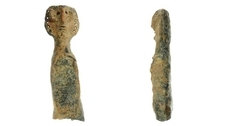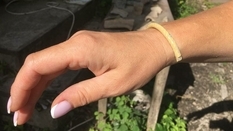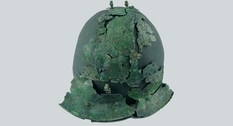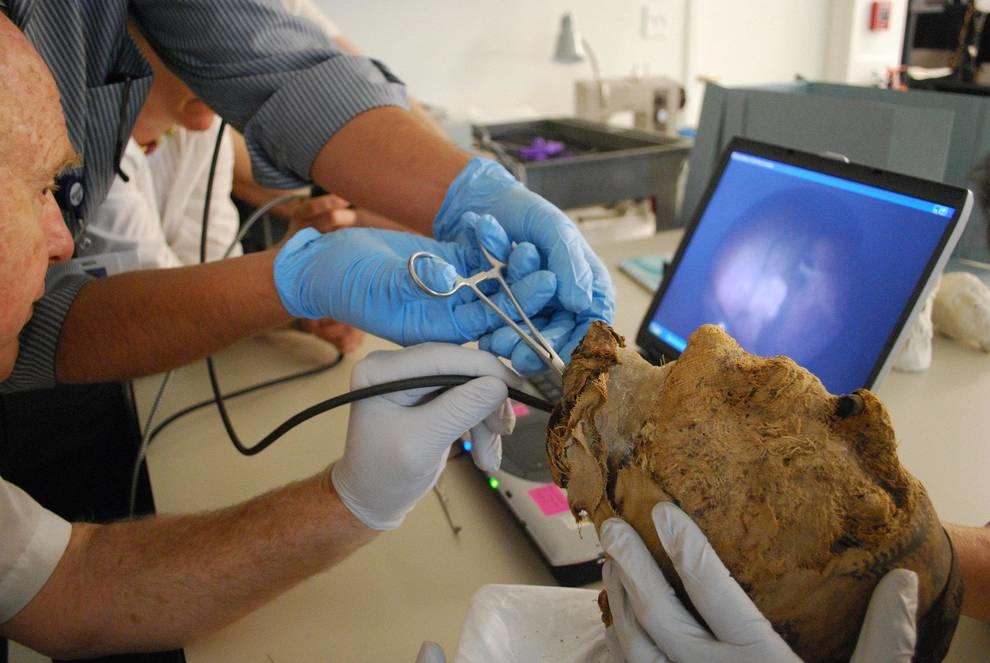
The mystery of the severed head of a 4000-year-old mummy
In 1915, a group of American archaeologists discovered the ancient Egyptian necropolis of Deir el-Bersh and the entrance to a hidden tomb. Inside the cramped limestone room, they had a terrible sight to see - on the cedar sarcophagus lay the severed head of the mummy.
The room, which the researchers designated as “Tomb 10A”, was the resting place of the Egyptian nomarch Jehutinakhta and his wife. At some point in the 4000 years of their “sleep”, robbers visited the tomb and stole gold and valuables. The plunderers threw the mummies into the torso corner and tried to set the tomb on fire to cover their tracks.
The archaeologists who discovered the looted tomb were sent to the Museum of Fine Arts in Boston, the sarcophagi and wooden sculptures preserved after the raid in 1921. Most of the collection remained in storage until 2009, until they were exposed. Although the mummy's torso remained in Egypt, the severed head was the highlight of the US exposure. She attracted the attention of visitors, she was surrounded by mystery.
“The head was found on a nomarch sarcophagus, but it is unknown to whom it belongs, the governor or his wife,” said museum curator Rita Fried. And then it was decided to conduct a DNA test.

“The problem is that until 2009, not a single successful extraction of a DNA sample from a 4000-year-old mummy was known.” Egyptian climate quickly destroys DNA. Therefore, the museum turned to the FBI to solve the riddle.
The Federal Bureau of Investigation has never conducted an examination of such an ancient sample. Successful extraction of genetic material from the ancient mummy could add a new technique to the arsenal of forensic scientists and decipher the past of other ancient remains.
“Honestly, I didn’t expect it to work, because at the time it was thought to be impossible,” said FBI forensic expert Odile Loreil.
Researchers believe that nomarh Jehutinakht and his wife lived around 2000 BC during the Middle Kingdom in ancient Egypt. Although the walls of the tomb were bare, the sarcophagi of the ancient rulers were decorated with beautiful hieroglyphs and images of their afterlife.
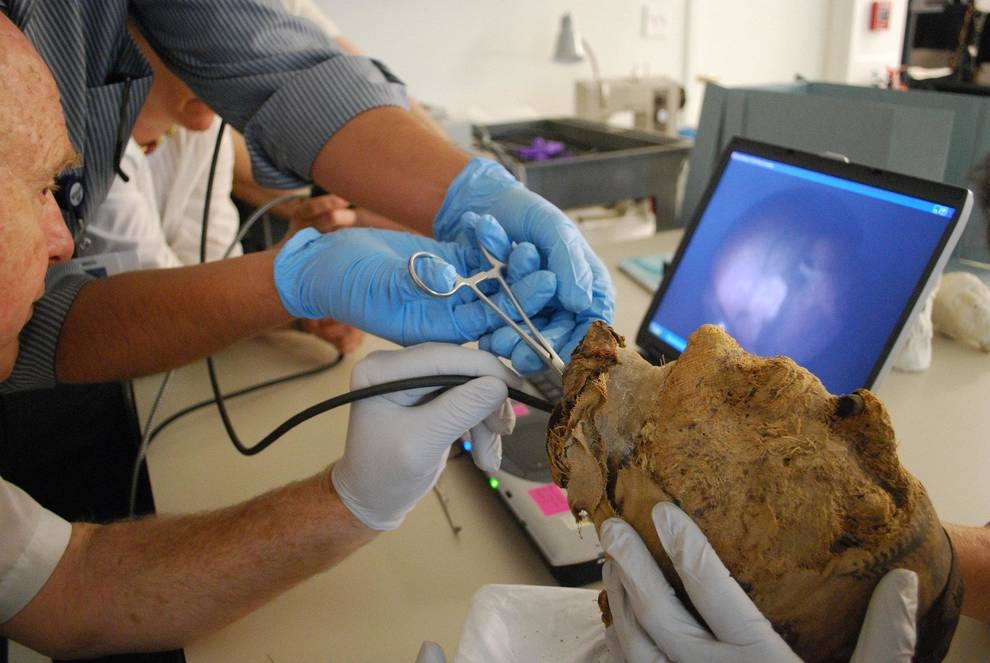
In the laboratory of the bureau, Loreil drilled the root of the tooth and extracted powder particles. She then rubbed a tooth and placed it in a DNA library for future research. She entered the tooth data into the computer and studied the structure and details of the chromosomes in the sample. When the program processed the request, a notification appeared on the screen - the tooth sample belongs to the man.
Odile Loreil proved that the mummified head belonged to the nomarch Jehutinakht. In addition, she found that ancient Egyptian mummies can successfully extract DNA. "For Egyptologists, this is one of the holy grails."
The study by Odile Loreil revealed another mystery. Over the centuries, archaeologists and historians have fought over the origins of the ancient Egyptians and how closely modern people living in North Africa are associated with them. To the surprise of scientists, on the maternal line, the ancestor of Jehutinakht was a Eurasian.
The room, which the researchers designated as “Tomb 10A”, was the resting place of the Egyptian nomarch Jehutinakhta and his wife. At some point in the 4000 years of their “sleep”, robbers visited the tomb and stole gold and valuables. The plunderers threw the mummies into the torso corner and tried to set the tomb on fire to cover their tracks.
The archaeologists who discovered the looted tomb were sent to the Museum of Fine Arts in Boston, the sarcophagi and wooden sculptures preserved after the raid in 1921. Most of the collection remained in storage until 2009, until they were exposed. Although the mummy's torso remained in Egypt, the severed head was the highlight of the US exposure. She attracted the attention of visitors, she was surrounded by mystery.
“The head was found on a nomarch sarcophagus, but it is unknown to whom it belongs, the governor or his wife,” said museum curator Rita Fried. And then it was decided to conduct a DNA test.

Photo © bigpicture.ru
“The problem is that until 2009, not a single successful extraction of a DNA sample from a 4000-year-old mummy was known.” Egyptian climate quickly destroys DNA. Therefore, the museum turned to the FBI to solve the riddle.
The Federal Bureau of Investigation has never conducted an examination of such an ancient sample. Successful extraction of genetic material from the ancient mummy could add a new technique to the arsenal of forensic scientists and decipher the past of other ancient remains.
“Honestly, I didn’t expect it to work, because at the time it was thought to be impossible,” said FBI forensic expert Odile Loreil.
Researchers believe that nomarh Jehutinakht and his wife lived around 2000 BC during the Middle Kingdom in ancient Egypt. Although the walls of the tomb were bare, the sarcophagi of the ancient rulers were decorated with beautiful hieroglyphs and images of their afterlife.

Photo © bigpicture.ru
In the laboratory of the bureau, Loreil drilled the root of the tooth and extracted powder particles. She then rubbed a tooth and placed it in a DNA library for future research. She entered the tooth data into the computer and studied the structure and details of the chromosomes in the sample. When the program processed the request, a notification appeared on the screen - the tooth sample belongs to the man.
Odile Loreil proved that the mummified head belonged to the nomarch Jehutinakht. In addition, she found that ancient Egyptian mummies can successfully extract DNA. "For Egyptologists, this is one of the holy grails."
The study by Odile Loreil revealed another mystery. Over the centuries, archaeologists and historians have fought over the origins of the ancient Egyptians and how closely modern people living in North Africa are associated with them. To the surprise of scientists, on the maternal line, the ancestor of Jehutinakht was a Eurasian.
